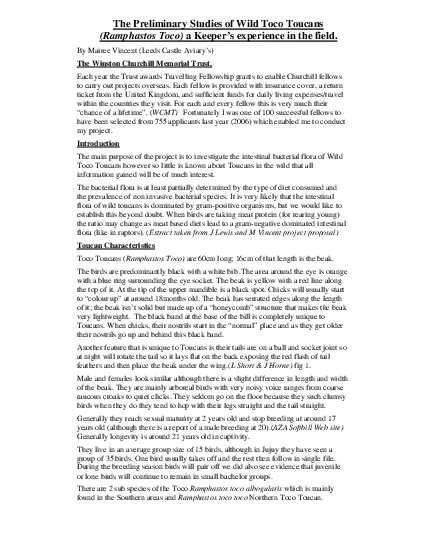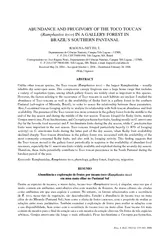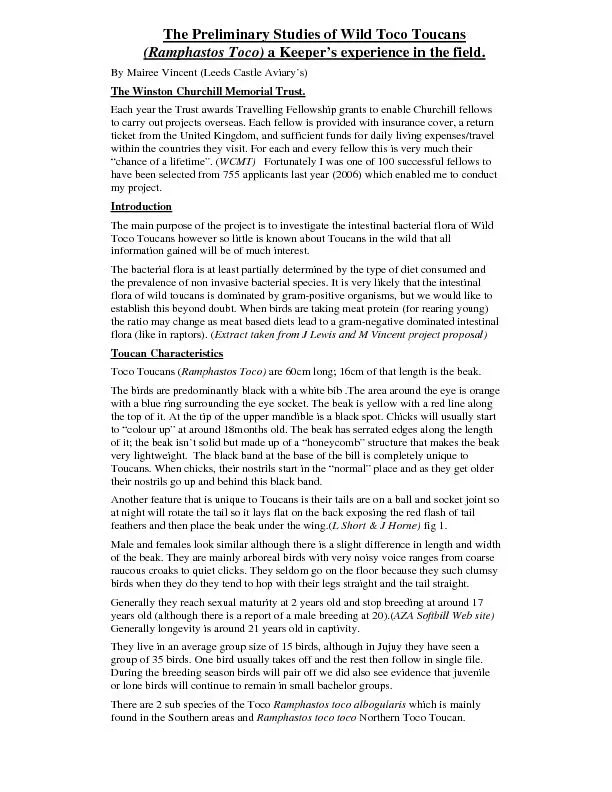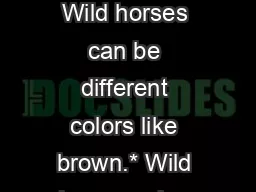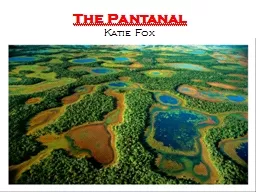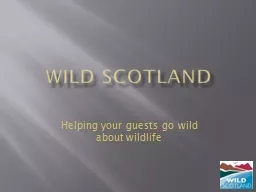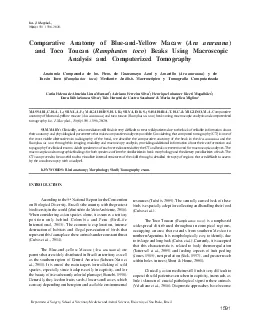PDF-The Preliminary Studies of Wild Toco Toucans
Author : white | Published Date : 2021-08-07
Ramphastos Toco By Mairee Vincent Leeds Castle Aviarys The Winston Churchill Memorial TrustEach year the Trust awards Travelling Fellowship grants to enable Churchill
Presentation Embed Code
Download Presentation
Download Presentation The PPT/PDF document "The Preliminary Studies of Wild Toco Tou..." is the property of its rightful owner. Permission is granted to download and print the materials on this website for personal, non-commercial use only, and to display it on your personal computer provided you do not modify the materials and that you retain all copyright notices contained in the materials. By downloading content from our website, you accept the terms of this agreement.
The Preliminary Studies of Wild Toco Toucans: Transcript
Download Rules Of Document
"The Preliminary Studies of Wild Toco Toucans"The content belongs to its owner. You may download and print it for personal use, without modification, and keep all copyright notices. By downloading, you agree to these terms.
Related Documents

